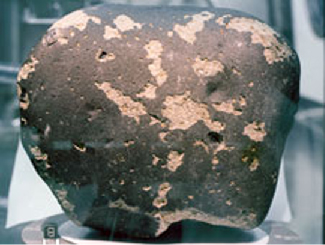| << Chapter < Page | Chapter >> Page > |
In 2011, NASA launched its largest (and most expensive) Mars mission since Viking (see [link] ). The 1-ton rover Curiosity , the size of a subcompact car, has plutonium-powered electrical generators, so that it is not dependent on sunlight for power. Curiosity made a pinpoint landing on the floor of Gale crater, a site selected for its complex geology and evidence that it had been submerged by water in the past. Previously, Mars landers had been sent to flat terrains with few hazards, as required by their lower targeting accuracy. The scientific goals of Curiosity include investigations of climate and geology, and assessment of the habitability of past and present Mars environments. It does not carry a specific life detection instrument, however. So far, scientists have not been able to devise a simple instrument that could distinguish living from nonliving materials on Mars.
The Curiosity rover required a remarkably complex landing sequence and NASA made a video about it called “7 Minutes of Terror” that went viral on the Internet.
A dramatic video summary of the first two years of Curiosity ’s exploration of the martian surface can be viewed as well.
Much of what we know of the Moon, including the circumstances of its origin, comes from studies of lunar samples, but spacecraft have not yet returned martian samples to Earth for laboratory analysis. It is with great interest, therefore, that scientists have discovered that samples of martian material are nevertheless already here on Earth, available for study. These are all members of a rare class of meteorites ( [link] )—rocks that have fallen from space.

How would rocks have escaped from Mars? Many impacts have occurred on the red planet, as shown by its heavily cratered surface. Fragments blasted from large impacts can escape from Mars, whose surface gravity is only 38% of Earth’s. A long time later (typically a few million years), a very small fraction of these fragments collide with Earth and survive their passage through our atmosphere, just like other meteorites. (We’ll discuss meteorites in more detail in the chapter on Cosmic Samples and the Origin of the Solar System .) By the way, rocks from the Moon have also reached our planet as meteorites, although we were able to demonstrate their lunar origin only by comparison with samples returned by the Apollo missions
Most of the martian meteorites are volcanic basalts; most of them are also relatively young—about 1.3 billion years old. We know from details of their composition that they are not from Earth or the Moon. Besides, there was no volcanic activity on the Moon to form them as recently as 1.3 billon years ago. It would be very difficult for ejecta from impacts on Venus to escape through its thick atmosphere. By the process of elimination, the only reasonable origin seems to be Mars, where the Tharsis volcanoes were active at that time.

Notification Switch
Would you like to follow the 'Astronomy' conversation and receive update notifications?